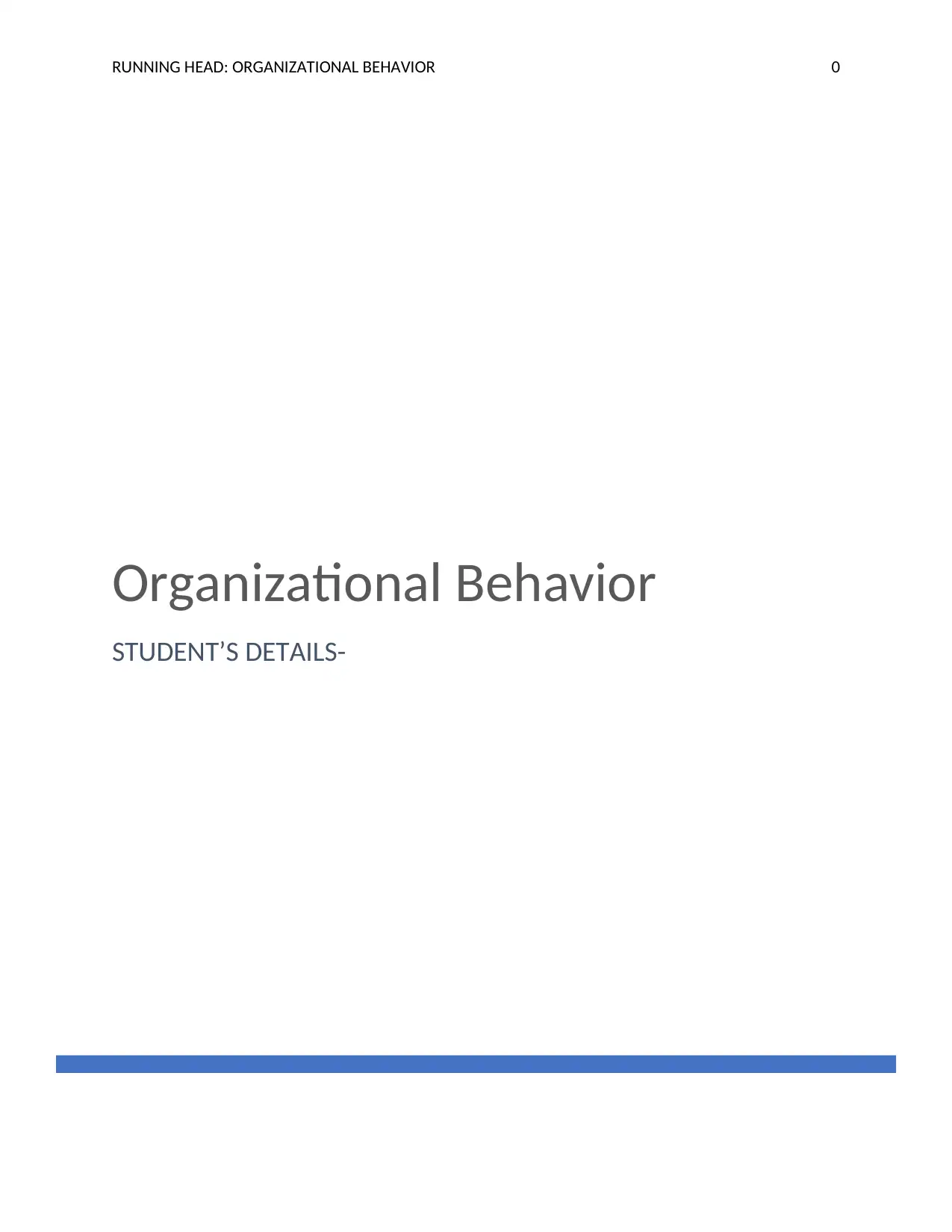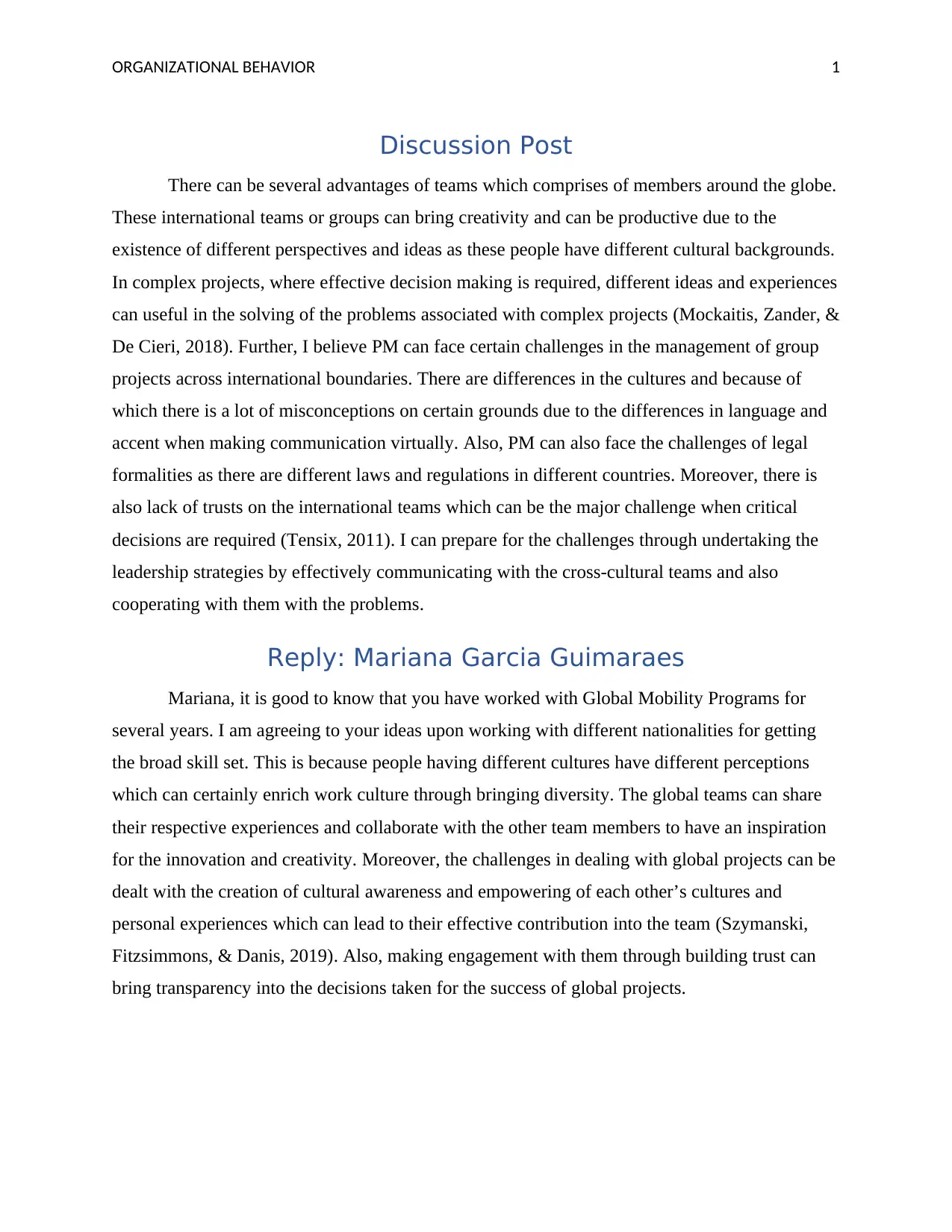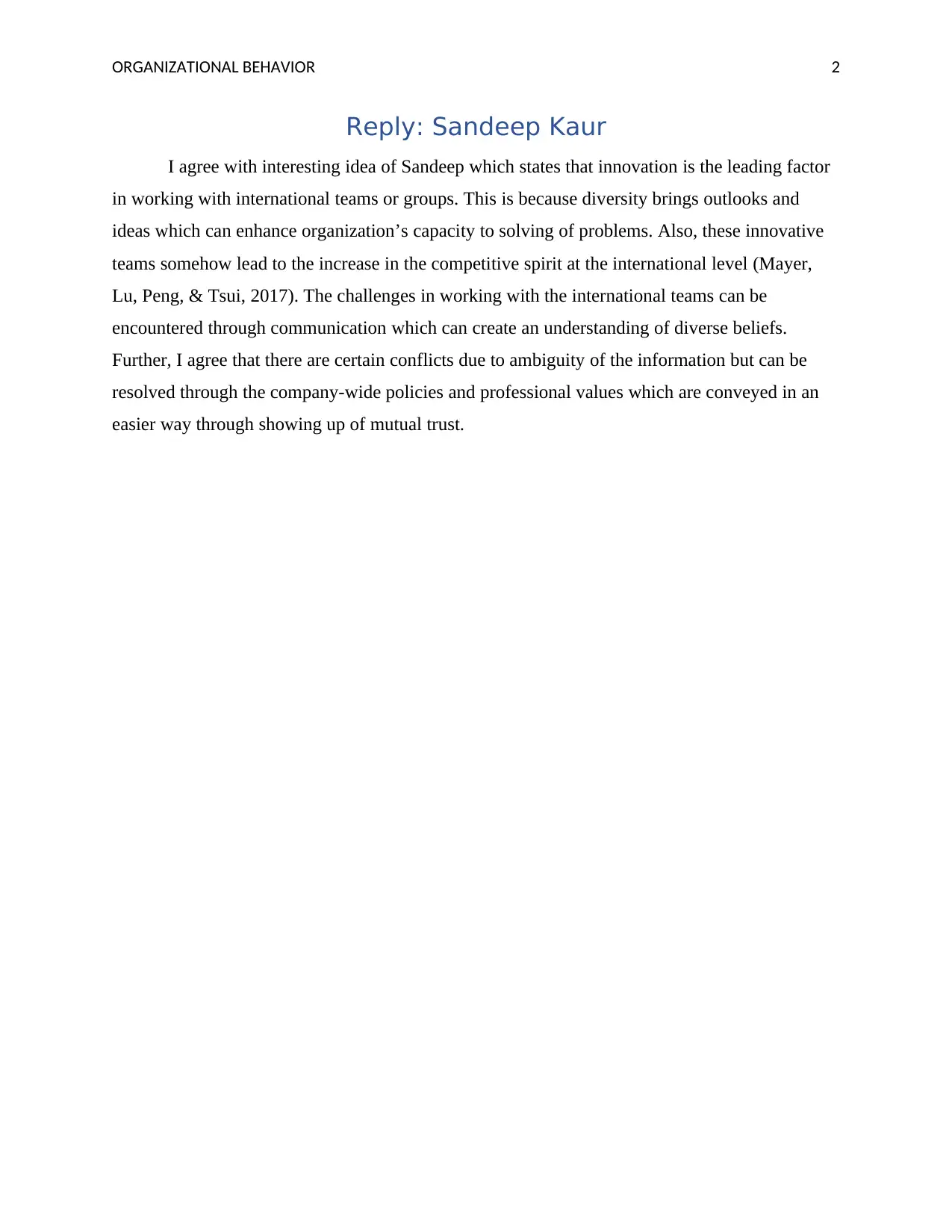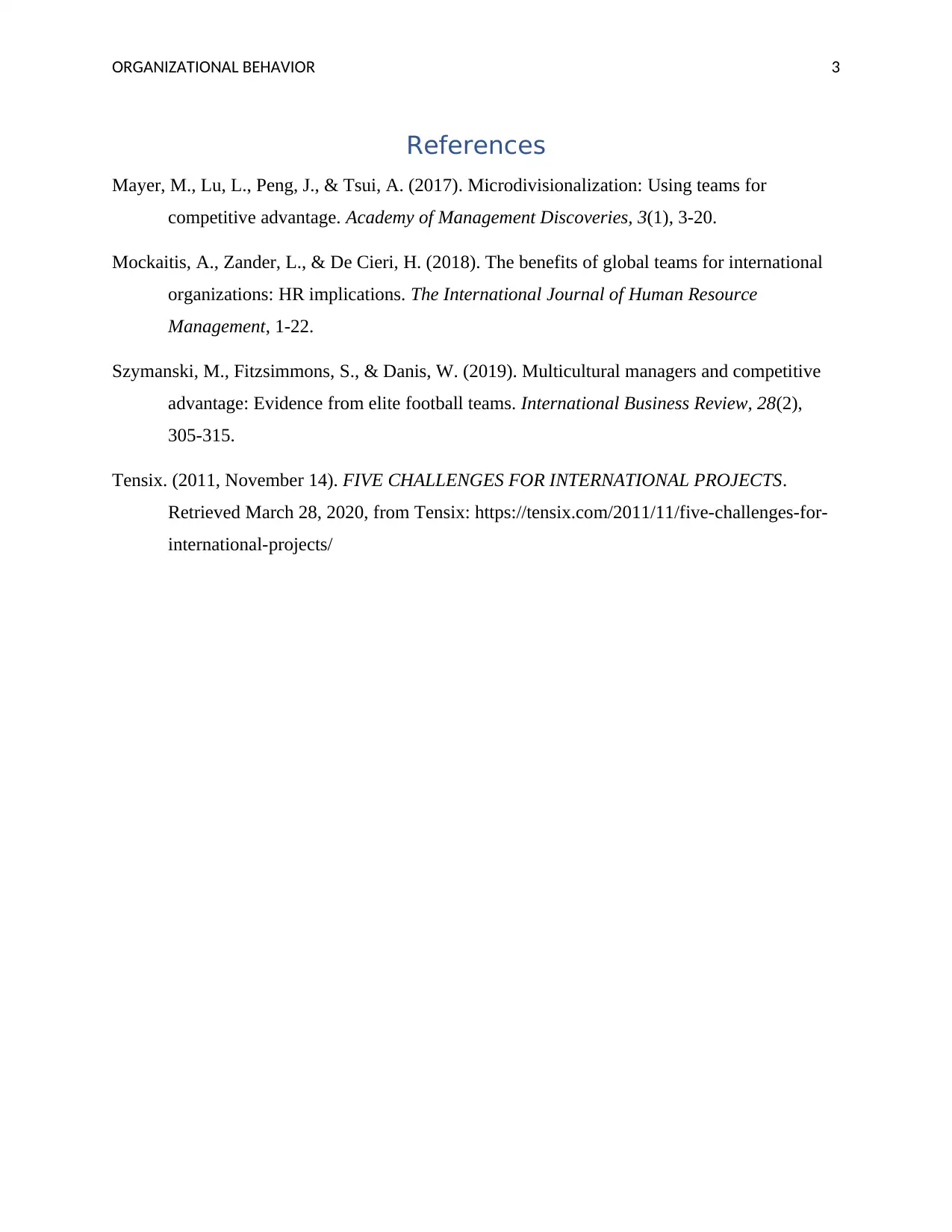Discussion Post: Advantages, Challenges of International Teams in OB
VerifiedAdded on 2022/09/02
|4
|682
|14
Discussion Board Post
AI Summary
This discussion post examines the advantages and disadvantages of utilizing global teams in organizational behavior. The author highlights the benefits of diverse perspectives and ideas that international teams bring, especially in complex projects where effective decision-making is crucial. Challenges such as cultural differences, communication barriers, legal formalities, and a lack of trust are also addressed. The author proposes leadership strategies like effective communication and cooperation to mitigate these challenges. The post includes replies from Mariana Garcia Guimaraes and Sandeep Kaur, who share their perspectives on the importance of diversity, innovation, and cultural awareness within global teams. The discussion emphasizes the value of diverse experiences, the role of innovation in enhancing problem-solving, and the need for clear communication and trust to overcome potential conflicts. References to relevant academic sources are also included to support the arguments made in the discussion.
1 out of 4











![[object Object]](/_next/static/media/star-bottom.7253800d.svg)